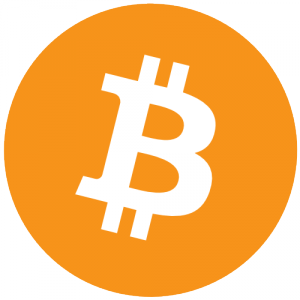 I will admit to owning just over one bitcoin, largely as an experiment. It’s no more than I’m willing to lose outright, so you can say that I sleep soundly at night. But a while back I came across this piece at O’Reilly Radar and it changed my perspective on bitcoin entirely.
I will admit to owning just over one bitcoin, largely as an experiment. It’s no more than I’m willing to lose outright, so you can say that I sleep soundly at night. But a while back I came across this piece at O’Reilly Radar and it changed my perspective on bitcoin entirely.
The author argues (persuasively in my opinion) that the real innovation isn’t bitcoin, but the blockchain which makes it possible. He describes five key concepts for understanding the blockchain, how it works, and how it can change how we do transactional activities on the web:
- “Decentralized consensus: …A decentralized scheme, on which the bitcoin protocol is based, transfers authority and trust to a decentralized virtual network and enables its nodes to continuously and sequentially record transactions on a public “block,” creating a unique “chain”: the blockchain…What’s important here is that with this degree of unbundling, the consensus logic is separate from the application itself; therefore, applications can be written to be organically decentralized, and that is the spark for a variety of system-changing innovations in the software architecture of applications, whether are money or non-money related.
- “The blockchain (and blockchain services): A blockchain is like a place where you store any data semi-publicly in a linear container space (the block). Anyone can verify that you’ve placed that information because the container has your signature on it, but only you (or a program) can unlock what’s inside the container because only you hold the private keys to that data, securely. So, the blockchain behaves almost like a database, except that part of the information stored — its “header” — is public…the blockchain acts as an alternative value transfer system that no central authority or potentially malicious third party can tamper with.
- “Smart contracts (and smart property): Smart contracts are the building blocks for decentralized applications.The basic idea behind smart contracts is that a transaction’s contractual governance between two or more parties can be verified programmatically via the blockchain, instead of via a central arbitrator, rule maker, or gatekeeper…The starting point that you assume when applying smart contracts is that third-party intermediaries are not needed in order to conduct transactions between two (or several) parties.
- “Trusted computing (or trustless transactions): When you combine the concepts behind the blockchain, decentralized consensus, and smart contracts, you start to realize they are enabling the spread of resources and transactions laterally in a flat, peer-to-peer manner, and in doing that, they are enabling computers to trust one another at a deep level…If you fast forward to a not-too-distant future, smart contracts and smart property will be created, dispensed, or executed routinely between consenting parties, without either of them even knowing that blockchain technology was the trusted intermediary.
- “Proof of work (and proof of stake):…The “proof of work” is a “right” to participate in the blockchain system. It is manifested as a “big enough hurdle” that prevents users from changing records on the blockchain without re-doing the proof of work. So, proof of work is a key building block because it cannot be “undone,” and it is secured via the strengths of cryptographic hashes that ensure its authenticity. But proof of work is expensive to maintain…and may run into future scalability and security issues because it depends solely on the miners’ incentives, which will be declining over time. An upgraded solution is “proof-of-stake,” which is cheaper to enforce but more expensive and more difficult to compromise. Proof of stake not only determines who gets to update the consensus, but it also prevents unwanted forking of the underlying blockchain.”
The author goes on to say “…we must see beyond the bitcoin promise to be the Internet of money, and into the blockchain’s promise to become a new development environment, just as web development was the new paradigm back in 1996.”
He identifies four emerging market segments for blockchain-based applications which you should see the original piece to find out more about. I’ll allow the author, William Mougayar, to have the last word:
“The reality is that the crypto-led computer science revolution is giving us concepts that go way beyond a one-currency type of scenario. Yes, bitcoin is programmable money, but the blockchain is also programmable value, programmable governance, programmable contracts, programmable ownership, programmable trust, programmable assets, etc. And we have barely scratched the surface on these applications.”


Further proof: http://money.cnn.com/2015/05/11/technology/nasdaq-bitcoin-technology/